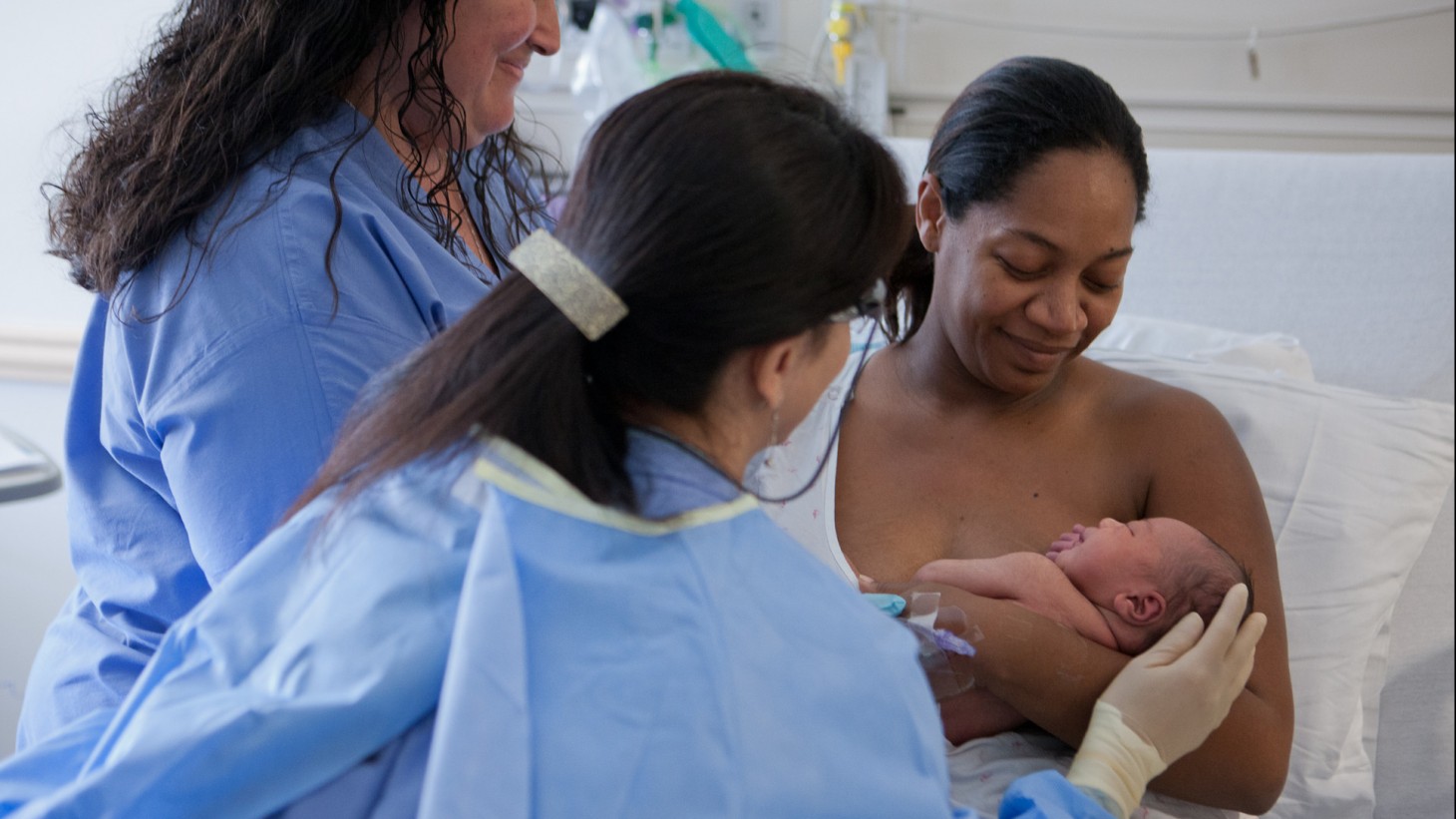
Skin-to-skin contact immediately following delivery has been shown to have great benefits for both mom and baby. Pictured left to right are Labor and Delivery RN Tonya Taboada, a member of HNA/OPEIU Local 50, Certfied Nurse Midwife Linda Chong Finn, and patients.
Going Skin-to-Skin Is Best for New Babies
Immediate skin-to-skin contact is beneficial for new infants and their mothers. It allows for bonding, and helps to regulate heart rate, respiration and blood sugar levels. It also helps initiate breastfeeding. But a delivery room is a busy place. The Labor and Delivery team at Moanalua Medical Center in Honolulu looked to improve skin-to-skin contact for new babies to at least 60 minutes. They used posters, handouts and quick conversations to get the word out. In seven months, the proportion of new babies getting this essential interaction improved from four percent to 71 percent.
Here's What Worked
- Establishing a baseline measurement for how long moms are getting skin-to-skin contact with their new babies
- Creating talking points of the benefits for both new baby and mother about this critical bonding
- Communicating with staff to ensure a minimum of 60 minutes of skin-to-skin contact occurs post delivery
What can your team do to explain the "why" behind what you are doing?
